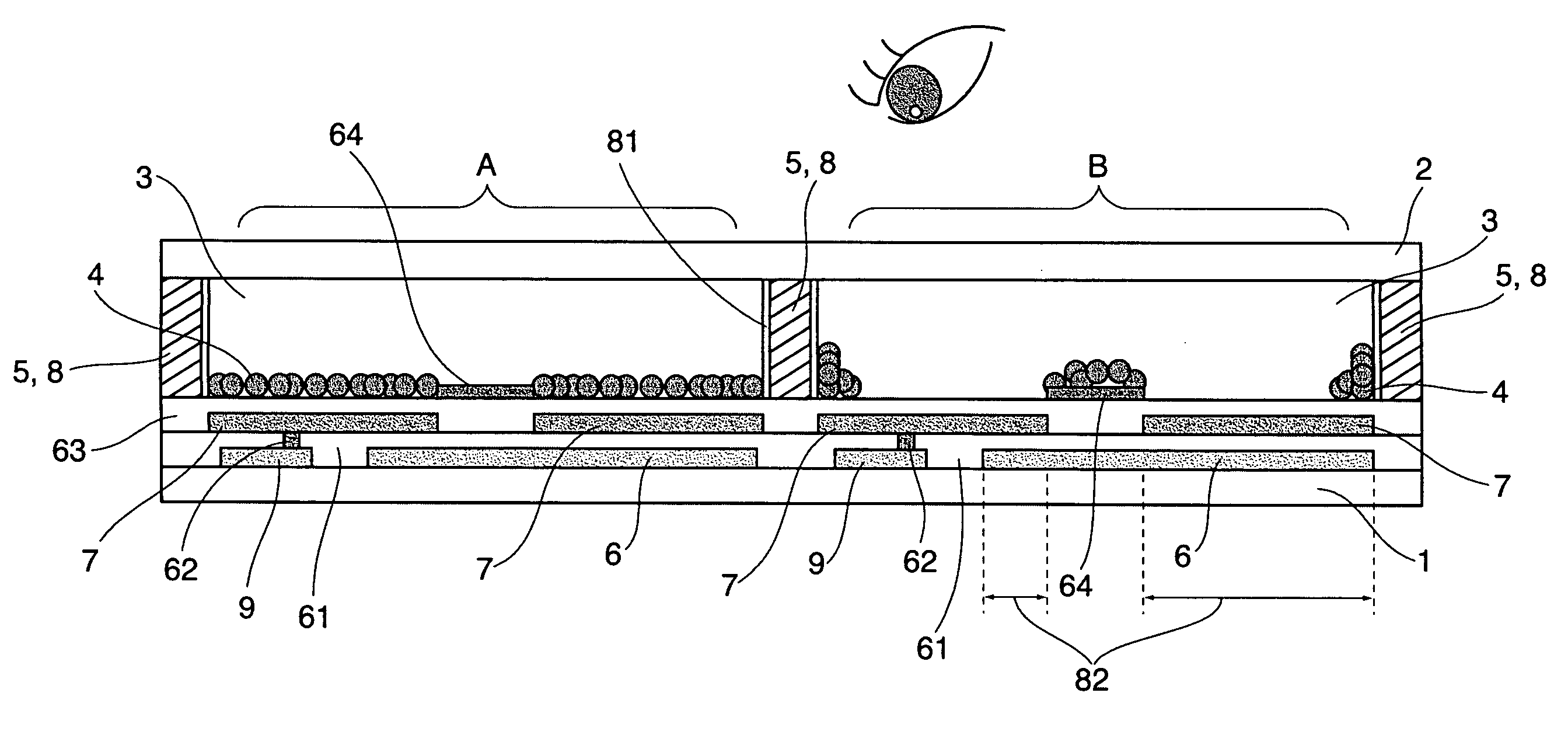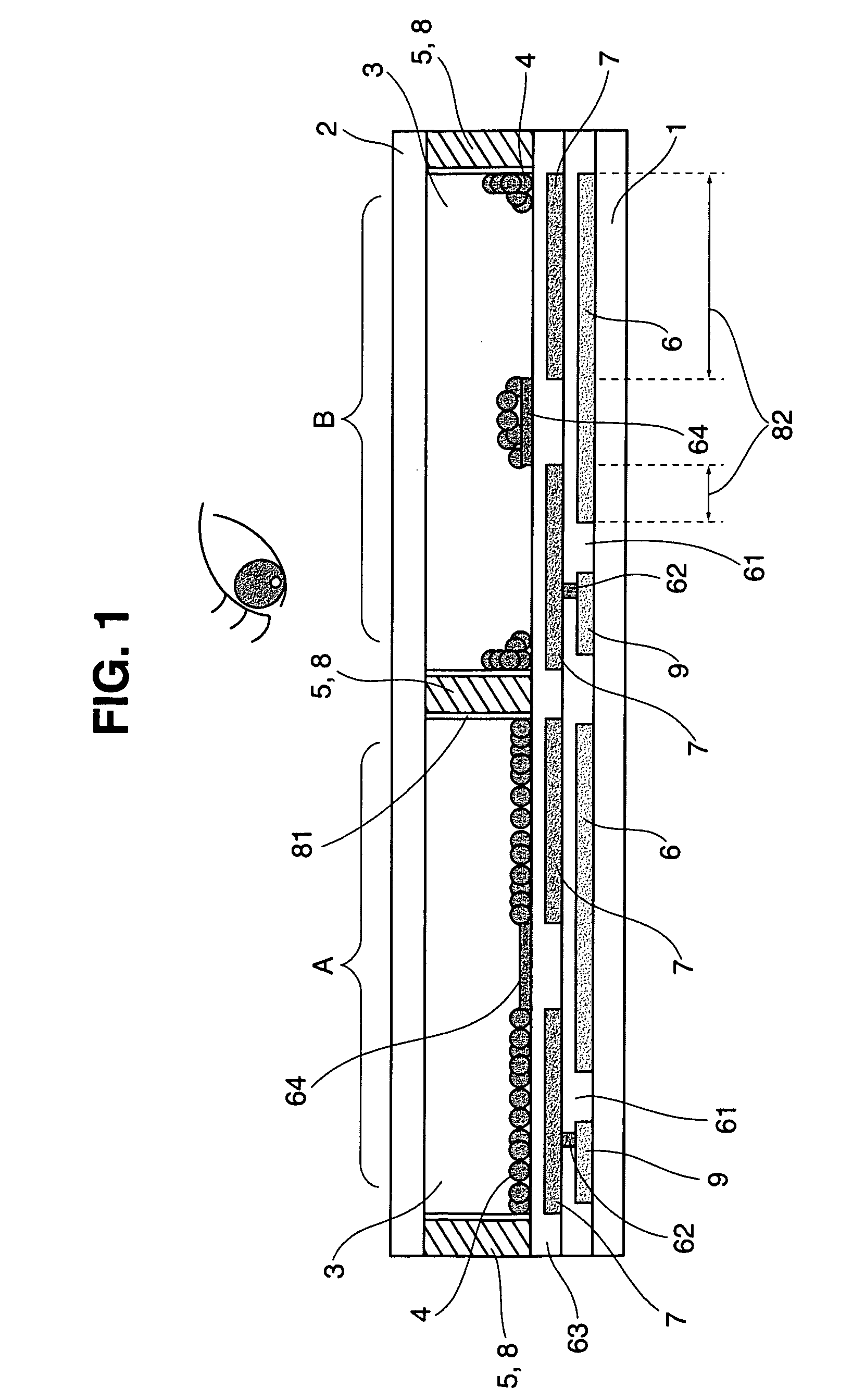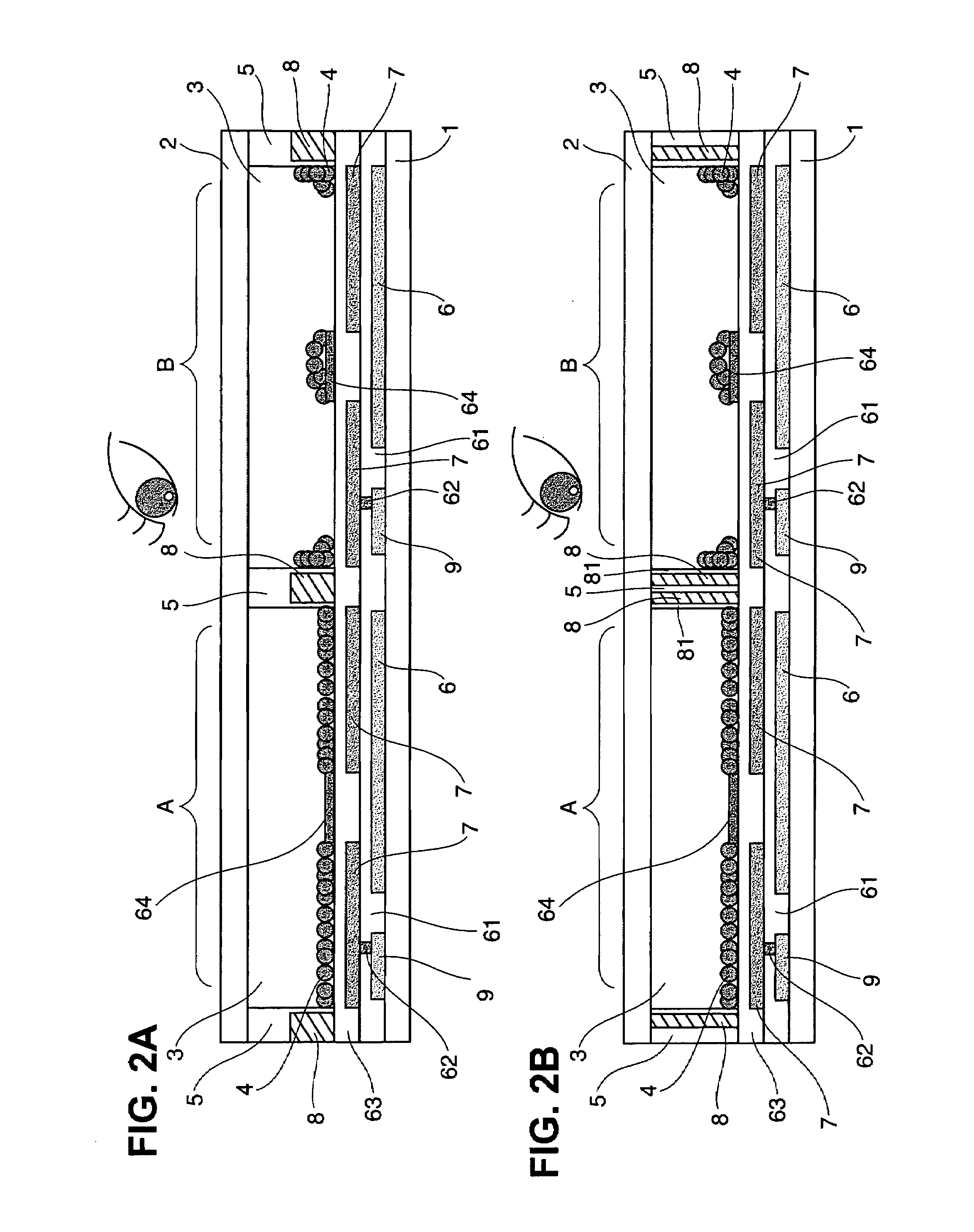Display device employing electrophoretic migration
a display device and electrophoretic technology, applied in static indicating devices, non-linear optics, instruments, etc., can solve the problems of affecting electrophoretic movement, lowering display contrast, deteriorating display contrast, etc., to prevent the migration of charged electrophoretic particles toward the second substrate 2 and simplify the manufacturing process.
- Summary
- Abstract
- Description
- Claims
- Application Information
AI Technical Summary
Benefits of technology
Problems solved by technology
Method used
Image
Examples
embodiment example 1
(Embodiment Example 1)
[0065]In accordance with an embodiment example 1, an electrophoretic display device having the structure indicated in FIG. 1 is manufactured. For the sake of simplicity, the following description may be made with reference to a method for manufacturing a single electrophoretic display device for each pixel or two adjacent pixels. However, it is obvious that a plurality of electrophoretic display devices can be manufactured at the same time.
[0066]In the display device of the embodiment example 1, each pixel has a size of 120 μm×120 μm, an area ratio between the collector electrode 6 and the display electrode 7 is 2:8, and the partition wall 5 has a width of 5 μm.
[0067]A glass substrate (1.1 mm thick) is used as the first substrate 1, and a switching element 9, other wirings needed for driving (not shown), an IC, and a collector electrode 6 are formed on the first substrate 1.
[0068]Next, a Si3N4 film as a dielectric layer 61 is formed over the entire surface of t...
embodiment example 2
(Embodiment Example 2)
[0075]In accordance with an embodiment example 2, an electrophoretic display device having the structure indicated in FIG. 2(b) is manufactured.
[0076]In the display device of the embodiment example 2, each pixel has a size of 200 μm×200 μm, an area ratio between the collector electrode 6 and the display electrode 7 is 2:8, and the partition wall 5 has a width of 7 μm.
[0077]A stainless foil substrate (260 μm thick) is used as the first substrate 1, and a switching element 9, other wirings needed for driving (not shown), an IC, and a collector electrode 6 are formed on the first substrate 1.
[0078]Next, an acrylic resin layer as a dielectric layer 61 is formed over the entire surface of the first substrate. At the same time, a contact hole 62 for making an electrical contact between the switching element 9 and a display electrode to be formed later is formed in the dielectric layer 61.
[0079]Next, an aluminum (Al) film as a display electrode is formed over the diel...
embodiment example 3
(Embodiment Example 3)
[0085]In accordance with an embodiment example 3, an electrophoretic display device having the structure indicated in FIG. 2(c) is manufactured.
[0086]In the display device of the embodiment example 1, each pixel has a size of 130 μm×130 μm, an area ratio between the collector electrode 6 and the display electrode 7 is 2:8, and the partition wall 5 has a width of 7 μm.
[0087]A glass substrate (1.1 mm thick) is used as the first substrate 1, and a switching element 9, other wirings needed for driving (not shown), an IC, and a collector electrode 6 are formed on the first substrate 1.
[0088]Next, a Si3N4 film as a dielectric layer 61 is formed over the entire surface of the first substrate. At the same time, a contact hole 62 for making an electrical contact between the switching element 9 and a display electrode to be formed later is formed in the dielectric layer 61.
[0089]Next, an aluminum (Al) film as a display electrode is formed over the dielectric layer, and p...
PUM
| Property | Measurement | Unit |
|---|---|---|
| height | aaaaa | aaaaa |
| height | aaaaa | aaaaa |
| width | aaaaa | aaaaa |
Abstract
Description
Claims
Application Information
 Login to View More
Login to View More - R&D
- Intellectual Property
- Life Sciences
- Materials
- Tech Scout
- Unparalleled Data Quality
- Higher Quality Content
- 60% Fewer Hallucinations
Browse by: Latest US Patents, China's latest patents, Technical Efficacy Thesaurus, Application Domain, Technology Topic, Popular Technical Reports.
© 2025 PatSnap. All rights reserved.Legal|Privacy policy|Modern Slavery Act Transparency Statement|Sitemap|About US| Contact US: help@patsnap.com



